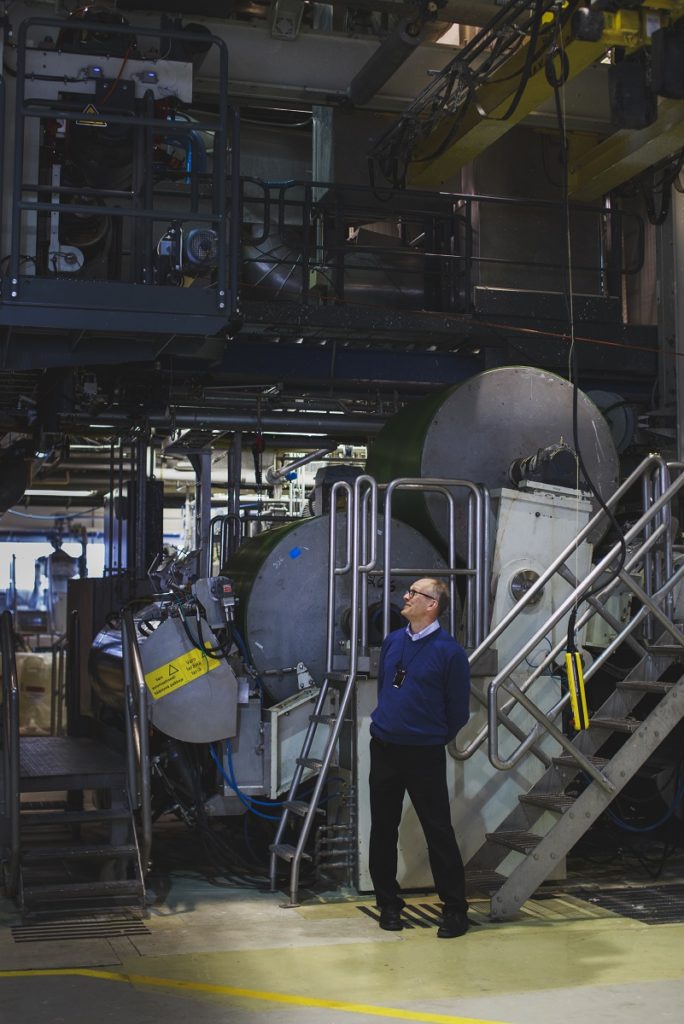Valmet wanted to grow from being a very good innovator into a still better one
According to Seppo Luomi, Technology Manager at the Valmet Paper Mills Business Unit, strong innovativeness requires know-how and expertise that are different from those needed for conventional product development.
Three years ago they took a decision at the Valmet Paper Mills Business Unit to improve innovation activity. In Seppo Luomi’s view, the challenge here was not whether ideas would come or not. They will always come.
Special attention, however, needs to be given to how to move from the evolution of an idea to actual product development, i.e. to a stage where you need to consider whether the idea makes sense, whether it is possible, whether it is a business and whether or not to invest in this particular idea.
Luomi thinks that another special area of interest is the final phase of product development, i.e. the commercialisation process. If the product is a paper machine, the sales process is a challenge right from the start:
‘In the final phase there can very well be long time delays. The products for sale are big investments, and it can easily take 18 months after the sale for the product and the services that go with it to be at the disposal of the customer. So we have to think about when precisely we start the sales process to make the time delay as short as possible. We are having a continuous risks-versus-benefits conversation,’ says Luomi.

Valmet is improving what it is already good at
To improve its innovation capability, the Valmet Paper Mills Business Unit decided to commission a maturity survey of its product development work. Innoman was chosen to conduct the study. Our company has developed a method based on scientific research to help organisations identify their strengths and areas for improvement.
The maturity survey was carried out over a three-month period. A small team of fewer than 10 people from different parts of the organisation came together. Nevertheless, they were all involved in product development on a daily basis. Involved in the process at Valmet were product development, sales and project management personnel.
The small team met a few times for half-day workshops. During the study, Pekka Berg and Jussi Pihlajamaa, who developed the method, used a a battery of questions to guide and control the discussion and had the members of the small team find a common answer to the questions.
‘In the discussions people had together, where issues were examined from a number of different angles, we were able to get a clear idea of what level we were on with what issue, what we were good at, and what needed further attention,’ says Luomi.
Berg and Pihlajamaa compared Valmet’s results with those for other companies and were able to see where Valmet was in relation to the other companies on a good level as well as others which were ahead. There were half a dozen or so areas for improvement.
‘We used Innoman’s method specifically to acquire suggestions for improvements. We knew that we were good in many areas, but we particularly wanted to know where we needed to improve,’ Luomi explains.
Benefit of the method
However, Luomi says the method’s main value was not that it allowed Valmet to see on what level its innovation and product development were in relation to other companies. Its greatest value was to be found in the discussions themselves.
‘The debate helped identify problems differently from what would have been the case with just a written report. The discussion benefited greatly from the interaction: when one person began to speak about something, an other would recognise the same phenomenon in his or her own work. These could have easily remained hidden but for the joint effort.’
Luomi compares the method to another maturity survey Valmet commissioned. In that one, answers were sought to the same questions, but by means of a written questionnaire.
The problem with the written survey proved to be the fact that each respondent understood the question in his or her own way, whereas the interviewer understood the questions in yet another way. Furthermore, the lack of interaction only serves to conceal the organisation’s knowledge and comprehension: they are simply not evident from the study.
‘Personally, I think that Innoman’s method – although it was a lot more laborious and took up more time than the written survey – was worth it. Together we revealed our strengths and identified areas where we could improve. The role of an outside consultant was crucial here. We read the results afterwards and we are still reading them. We will keep with Innoman in the future,’ says Luomi.
